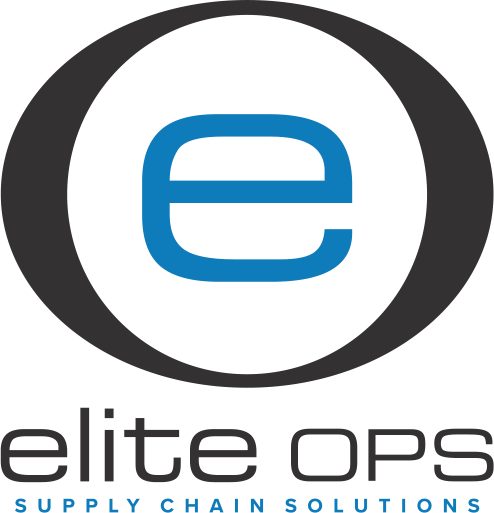Types of Supply Chain Models Explained.
Understanding supply chain models is crucial for any business aiming to optimize its logistics and operations. These models serve as blueprints for managing the flow of goods, information, and finances from suppliers to customers. Their primary role is to enhance efficiency, reduce costs, and ensure timely delivery.
Choosing the appropriate supply chain model can significantly impact a company’s operational success and competitiveness. Each model comes with its own set of advantages and challenges, making it essential to align the model with your business goals and market conditions.
In this article, we will explore six essential types of supply chain models in detail:
- Continuous Flow Model
- Fast Chain Model
- Efficient Chain Model
- Agile Model
- Custom-configured Model
- Flexible Model
Each of these models caters to different industry needs and operational strategies. By understanding their unique features, you can make informed decisions that drive your business forward.
For instance, implementing strategies like email receipt marketing, which is particularly effective in eCommerce order fulfillment settings, can significantly boost sales. Additionally, leveraging ABC inventory analysis management can streamline inventory management processes.
Moreover, a well-structured shipping system is vital for maintaining customer satisfaction. Companies such as Elite OPS specialize in shipping and reverse logistics, offering solutions that save time and money on shipping.
1. Continuous Flow Model
The continuous flow model is designed for industries characterized by stable demand and uniform production processes. This model focuses on maintaining a consistent, uninterrupted flow of products through the supply chain to ensure efficiency and predictability.
Definition and Characteristics
- Definition: A supply chain model that emphasizes a steady and predictable flow of goods.
- Characteristics:
- High automation
- Standardized production processes
- Minimal inventory fluctuations
Suitable Industries and Businesses
Industries that benefit most from the continuous flow model include:
- Food and Beverage: Consistent demand for staple items makes this model ideal.
- Pharmaceuticals: Ensures a steady supply of essential drugs.
- Chemicals: Uniform production processes align well with continuous flow dynamics.
An example of a company that successfully utilizes the continuous flow model is Amazon, which maintains a steady supply chain to meet consumer demands.
Advantages
The continuous flow model offers several key benefits:
- Cost Efficiency: Minimizes costs through streamlined operations.
- Predictability: Enhances forecasting accuracy, leading to better inventory management.
- Reduced Lead Times: Steady production minimizes delays.
Potential Risks
While advantageous in many ways, the continuous flow model is not without risks:
- Demand Fluctuations: Sudden changes in demand can disrupt the steady flow, leading to inefficiencies.
- Lack of Flexibility: The model’s rigidity can make it challenging to adapt to market changes quickly.
Adopting the continuous flow model requires a careful evaluation of your industry’s demand patterns and production capabilities. This approach works best where stability in supply chains is paramount. However, it’s important to note that implementing such a system may require successfully implementing new software at your company for better automation and efficiency.
In addition, businesses should remain vigilant about potential service disruptions, such as those indicated in recent USPS service alerts which can affect supply chain continuity.

2. Fast Chain Model
The fast chain model is designed to thrive in markets characterized by rapid changes and short product life cycles. This model emphasizes the necessity for speed and agility to stay ahead of market trends and consumer demands.
Key Characteristics
- Rapid Response: The fast chain model enables companies to respond quickly to market changes, ensuring that products reach consumers at the peak of demand.
- Short Product Life Cycles: Suitable for industries where products have a brief market lifespan, such as fashion, electronics, and certain consumer goods.
Suitable Industries
Industries that benefit significantly from the fast chain model include:
- Fashion: With trends changing every season, speed to market is crucial.
- Electronics: Rapid technological advancements require quick product turnover.
- Consumer Goods: Items with high demand variability benefit from this model’s adaptability.
Importance of Speed to Market
Speed to market is critical for maximizing returns in fast-paced environments. By reducing lead times and accelerating product launches, businesses can capitalize on current trends and avoid overproduction or obsolescence. For instance, utilizing Kickstarter crowdfunding can be an effective strategy for quickly sourcing funds and launching new products in such dynamic markets.
Challenges
Maintaining efficiency while operating at such high speeds poses several challenges:
- Supply Chain Coordination: Ensuring all parts of the supply chain are synchronized to meet tight deadlines. Achieving preferred shipper status can greatly enhance supply chain efficiency.
- Inventory Management: Balancing stock levels to prevent shortages or excess. Effective order fulfillment logistics can help streamline this process.
- Quality Control: Maintaining product quality despite accelerated production schedules.
The fast chain model requires a precise balance between speed and efficiency, making it essential for businesses in dynamic markets seeking competitive advantage. To achieve this balance, companies may need to consider aspects like procurement sourcing and explore various strategies through resources available on platforms like Elite OPS.
3. Efficient Chain Model
The efficient chain model is designed to maximize efficiency and minimize waste. This model is ideal for businesses operating in highly competitive industries where cost control and operational efficiency are crucial.
Key Strategies
- Accurate Production Forecasts: Central to this model is the ability to predict demand accurately. Companies often utilize advanced analytics and data-driven approaches to refine their production forecasts.
- Lean Manufacturing: Implementing lean principles helps eliminate waste, streamline operations, and reduce costs.
- Supplier Integration: Close relationships with suppliers ensure a steady flow of materials, reducing delays and stockouts.
Pros
- Cost Efficiency: By optimizing resources and reducing waste, companies can significantly lower their operational costs.
- Predictability: Accurate forecasts lead to more predictable production schedules and inventory levels.
- Competitive Advantage: Efficiency gains translate into better pricing strategies, enhancing competitiveness in the market.
Cons
- Vulnerability to Disruptions: The efficient chain model’s reliance on accurate forecasts and streamlined operations makes it susceptible to disruptions such as labor shortages or supply chain interruptions.
- Rigidity: This model may lack the flexibility needed to adapt quickly to sudden changes in demand or market conditions.
In essence, the efficient chain model is a powerful approach for businesses aiming to dominate through operational excellence. However, it requires meticulous planning and robust systems to mitigate potential risks associated with its inherent vulnerabilities.
To further enhance operational efficiency, businesses should also consider how they can improve their customer service. For example, providing great customer service to millennials can significantly boost profitability as they represent a huge target market. Additionally, attention should be paid to the details of order fulfillment, such as ensuring that shipping boxes are properly packed and labeled. These aspects can contribute greatly to overall customer satisfaction and retention.
4. Agile Model
The agile model is designed for businesses that need to swiftly adapt to changes and manage specialty items effectively. This model places a strong emphasis on flexibility and responsiveness, making it ideal for industries where demand can be unpredictable, such as technology or specialized manufacturing.
Key Features of the Agile Model:
- Adaptability: The agile model allows businesses to quickly adjust to changes in the market or customer preferences.
- Customization: It is particularly suited for managing specialty items that require unique handling throughout the supply chain.
- Speed: Rapid response times are crucial, enabling companies to capitalize on emerging opportunities without delay.
Importance of Expertise:
Managing an agile supply chain demands a high level of expertise. Businesses must:
- Identify and respond to unique challenges: Each specialty item may present different logistical hurdles, necessitating tailored solutions.
- Utilize advanced technology: Tools like real-time data analytics and automated systems can enhance agility.
- Foster collaboration: Close coordination with suppliers and partners ensures seamless operations.
Implementing an agile model requires dedication and skill but offers significant benefits for companies dealing with niche products or rapidly changing markets. By leveraging this approach, you can maintain a competitive edge through enhanced flexibility and swift market responsiveness.
For instance, Elite Ops, a safe distribution company, exemplifies how an agile model can be effectively utilized to manage various types of products while ensuring swift adaptation to market changes.

5. Custom-configured Model
The custom-configured model blends elements of the agile and continuous flow approaches, allowing businesses to tailor their supply chain processes to specific needs. This model emphasizes flexibility and customization, enabling companies to adapt production methods based on unique requirements.
Unique Features of the Custom-configured Model
- Hybrid Approach: Combines the predictability of the continuous flow model with the adaptability of the agile model.
- Customization: Ideal for scenarios where standard processes do not suffice, such as producing small batches or prototypes.
- Flexibility: Allows for adjustments during various stages of production, ensuring that specific customer demands are met efficiently.
Situations Necessitating Customization
Certain business contexts make the custom-configured model particularly advantageous:
- Small Batches: Companies that produce limited quantities of specialized products benefit from this model’s ability to adjust processes without significant downtime.
- Prototyping: During the development phase of new products, customization is crucial to meet precise specifications and test different iterations effectively.
- Niche Markets: Businesses serving niche markets with highly specific requirements can utilize this model to ensure their supply chain remains responsive and efficient.
By integrating both agile and continuous flow methodologies, the custom-configured model offers a balanced approach, optimizing supply chain performance while meeting unique production needs.
6. Flexible Model
The flexible model is characterized by its ability to rapidly adjust to changes in demand, making it ideal for businesses experiencing significant fluctuations such as peak season demand management. This model excels in environments where the demand can be highly unpredictable, requiring the supply chain to be both responsive and adaptive.
Characteristics of the Flexible Model:
- Rapid Adjustments: The flexible model allows for quick changes in production volumes, ensuring that supply meets varying levels of demand efficiently.
- Scalability: Easily scalable operations to increase or decrease output as required.
- Responsiveness: High responsiveness to market changes, customer requirements, and unexpected events.
Strategies for Managing Flexibility Effectively:
- Technology Integration: Utilizing advanced technologies like AI and machine learning can predict demand trends accurately, enabling proactive adjustments.
- Dynamic Workforce Management: Employing a dynamic workforce that can be scaled up or down based on demand helps maintain operational efficiency.
- Supplier Relationships: Developing strong relationships with multiple suppliers ensures a reliable supply of materials even during high-demand periods.
- Inventory Management Systems: Implementing sophisticated inventory management systems allows for real-time tracking and efficient allocation of resources.
Example: In e-commerce fulfillment centers, leveraging a flexible model is crucial. For instance, Elite OPS in Utah effectively manages order surges during peak seasons while maintaining customer satisfaction by integrating API with shopping carts such as Shopify and Amazon Seller.
This approach not only optimizes complex supply chains but also minimizes costs and maximizes customer service, aligning operations management with overall business strategy. It also emphasizes the importance of procurement and inventory management working hand-in-hand to elevate an eCommerce business. Additionally, during the holiday season when shipping demands skyrocket, following certain shipping tips can significantly ease the process for businesses.
Comparison of Supply Chain Models
When you compare supply chain models, understanding their strengths and weaknesses is crucial for selecting the right approach for your business needs. Here’s a side-by-side look at each type:
Supply Chain Model Strengths and Weaknesses
- Continuous Flow Model
- Cost-efficient, predictable, ideal for stable demand
- Vulnerable to demand fluctuations
- Fast Chain Model
- Quick market response, maximizes returns in fast-paced industries
- Challenges in maintaining efficiency
- Efficient Chain Model
- Maximizes efficiency, effective in hyper-competitive markets
- Susceptible to disruptions like labor shortages
- Agile Model
- Highly adaptable, suitable for specialty products
- Requires expertise in managing unique supply challenges
- Custom-configured Model
- Blends agile and continuous flow approaches, customizable for small batches
- Complexity in blending different methods
- Flexible Model
- Rapid adjustments to demand changes, efficient under varying conditions
- Requires robust technology and skilled personnel for effective management
Understanding these characteristics can help align your operational strategy with the appropriate supply chain model to enhance efficiency and competitiveness. For businesses looking to enhance their operational strategy further, exploring options like order fulfillment and third-party logistics (3PL) pricing models could provide valuable insights. Companies such as Elite OPS offer a combination of personal attention and state-of-the-art technology in their order fulfillment services, which can significantly streamline supply chain processes.
Identifying Suitable Supply Chain Models for Businesses
When you aim to identify suitable supply chain models for business needs, several criteria come into play. Aligning your choice with specific business goals is essential.
Criteria to Consider:
- Cost Efficiency: If minimizing costs is a top priority, the Efficient Chain Model could be ideal due to its focus on maximizing efficiency.
- Flexibility: For businesses needing rapid adjustments to demand changes, the Flexible Model allows for swift adaptability.
- Stability of Demand: Industries with stable demand and uniform goods might benefit from the Continuous Flow Model.
- Market Speed: Companies in rapidly changing markets, such as fashion, should consider the Fast Chain Model for its speed-to-market advantage.
- Specialty Products: The Agile Model suits businesses dealing with specialty items requiring unique handling.
- Customization Needs: When production stages necessitate customization, the Custom-configured Model offers a blend of agile and continuous flow approaches.
Understanding these criteria helps in making an informed decision that aligns your supply chain model with your business objectives. However, it’s also crucial to consider potential challenges such as backlogs and backorders which can significantly impact your supply chain efficiency. Furthermore, adopting best practices in eCommerce supplier risk management can help mitigate risks associated with supplier relationships and ensure smoother operations.
Bottom Line
Choosing the right supply chain planning models is essential for aligning operations with business strategy. Companies must carefully evaluate their unique needs and objectives:
- Cost Efficiency: Models like the Continuous Flow or Efficient Chain might be ideal.
- Flexibility: The Agile or Flexible models could better suit dynamic demand environments.
The world of supply chain management is constantly changing, influenced by new technologies and shifting market trends. For example, ecommerce trends in the metaverse are transforming how businesses operate online. Staying updated on these trends ensures your strategies remain competitive and effective.
Moreover, knowing about different inventory management techniques such as the LIFO method can further improve your supply chain operations.
Encouragement: Take a proactive approach in evaluating and adopting the most suitable supply chain model to enhance operational success and customer satisfaction.
FAQs (Frequently Asked Questions)
What are supply chain models?
Supply chain models are frameworks that outline how a company manages its supply chain operations. They play a crucial role in effective supply chain management by providing a structured approach to meet business needs, optimize efficiency, and enhance competitiveness.
Why is it important to select the right supply chain model?
Choosing the appropriate supply chain model can significantly impact a company’s operational success and competitiveness. The right model aligns with business goals and ensures that resources are utilized efficiently while meeting customer demands.
What is the Continuous Flow Model and in which industries is it suitable?
The Continuous Flow Model is characterized by stability in supply chains, making it ideal for industries with steady demand. It offers advantages like cost efficiency and predictability but may face risks associated with demand fluctuations.
How does the Fast Chain Model cater to rapidly changing markets?
The Fast Chain Model is designed for short product life cycles and industries such as fashion. It emphasizes speed to market to maximize returns but faces challenges in maintaining efficiency due to rapid changes in consumer preferences.
What are the key features of the Agile Model?
The Agile Model is highly adaptable, focusing on specialty items that require unique management strategies. It emphasizes expertise in handling specific supply challenges, making it suitable for businesses dealing with customized or niche products.
How can businesses evaluate which supply chain model suits their needs?
Businesses can evaluate suitable supply chain models by assessing their specific goals, such as prioritizing cost efficiency versus flexibility. Criteria include analyzing production forecasts, demand patterns, and the need for customization during production stages.








